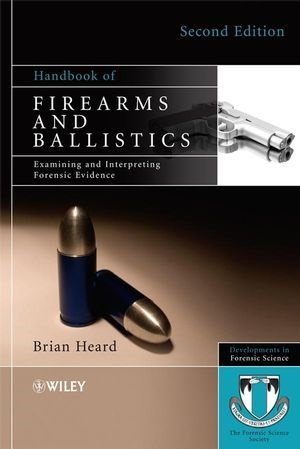Ulteriori informazioni
Informationen zum Autor Brian Heard began his career as an examiner in firearms and ballistics with the Metropolitan Police Forensics Firearms Laboratory at New Scotland Yard, London, UK. He rose to the level of Deputy Head of the Laboratory before joining the Royal Hong Kong Police as a ballistics officer. He is currently the officer in charge of the Ballistics and Firearms Identification Bureau for the Royal Hong Kong Police. He appears regularly in court as an expert witness in cases involving firearms, ammunition, tools and toolmarks, and has undertaken the research, development and implementation of improved techniques for the collection, examination and interpretation of gunshot residue particles via a scanning electron microscope. He also lectures to police training establishments and related organisations on all aspects of forensic ballistics, forensic firearms and toolmark examinations, gunshot residue analysis and the use of these techniques in criminal investigations. Klappentext The updated second edition of Handbook of Firearms and Ballistics includes recent developed analytical techniques and methodologies with a more comprehensive glossary, additional material, and new case studies. With a new chapter on the determination of bullet caliber via x-ray photography, this edition includes revised material on muzzle attachments, proof marks, non-toxic bullets, and gunshot residues. Essential reading for forensic scientists, firearms examiners, defense and prosecution practitioners, the judiciary, and police force, this book is also a helpful reference guide for undergraduate and graduate forensic science students. Zusammenfassung Completely revised and updated Second Edition of this successful book. Includes updated material on proof marks; muzzle attachments; non toxic bullets; GSR particles and SEM sampling Includes new case study material including the Jill Dando murder enquiry as a key example for reporting on GSR cases. Inhaltsverzeichnis Developments in Forensic Science ix Acknowledgements xi Foreword xiii 1 Firearms 1 1.1 A Brief History of Firearms 1 1.2 Weapon Types and Their Operation 19 1.3 Proof Marks 32 2 Ammunition 43 2.1 A Brief History of Ammunition 43 2.2 Ammunition Components 48 2.3 Non-toxic Shot 77 2.4 A Brief History of Propellants 80 2.5 Priming Compounds and Primers 86 2.6 Headstamp Markings on Ammunition 94 3 Ballistics 101 3.1 Internal, External and Terminal Ballistics 101 3.2 Internal Ballistics 102 3.3 External Ballistics 109 3.4 Terminal Ballistics 124 4 Forensic Firearms Examination 145 4.1 A Brief History of Forensic Firearms Identifi cation 145 4.2 Rifl ing Types and Their Identifi cation 154 4.3 Fluted, Annular Ringed, Helical, Perforated and Oversized Chambers 166 4.4 Basic Concepts of Striation Matching 170 4.5 Basic Methodology Used in Comparison Microscopy 182 4.6 Mathematical Proof of Striation Matches 186 4.7 Accidental Discharge 191 4.8 Identifi cation of Calibre from the Bullet Entry Hole 197 4.9 Ricochet Analysis 200 4.10 Bullet Penetration and Trajectory through Glass 204 5 Range of Firing Estimations and Bullet Hole Examinations 211 5.1 Introduction 211 5.2 The Use of X-ray Photography 212 5.3 Range of Firing Estimations for Pistols and Rifl es 219 5.4 Chemical Tests for Range of Firing Estimations and Bullet Entry/Exit Hole Identifi cation 227 5.5 Range of Firing Estimations for Shotguns 233 6 Gunshot Residue Examination 241 6.1 Introduction 241 6.2 Formation of Discharge Residue 241 6.3 Distribution of GSR Particles 242 6.4 Identifi cation of GSR Particles 243 6.5 The Use of the SEM for GSR Dete...

